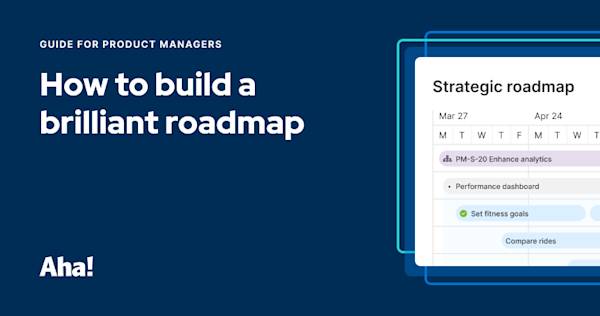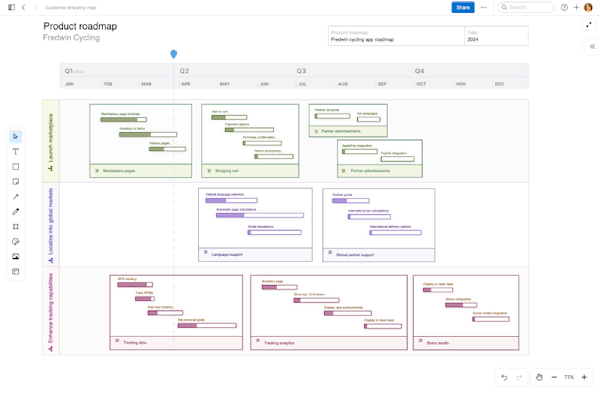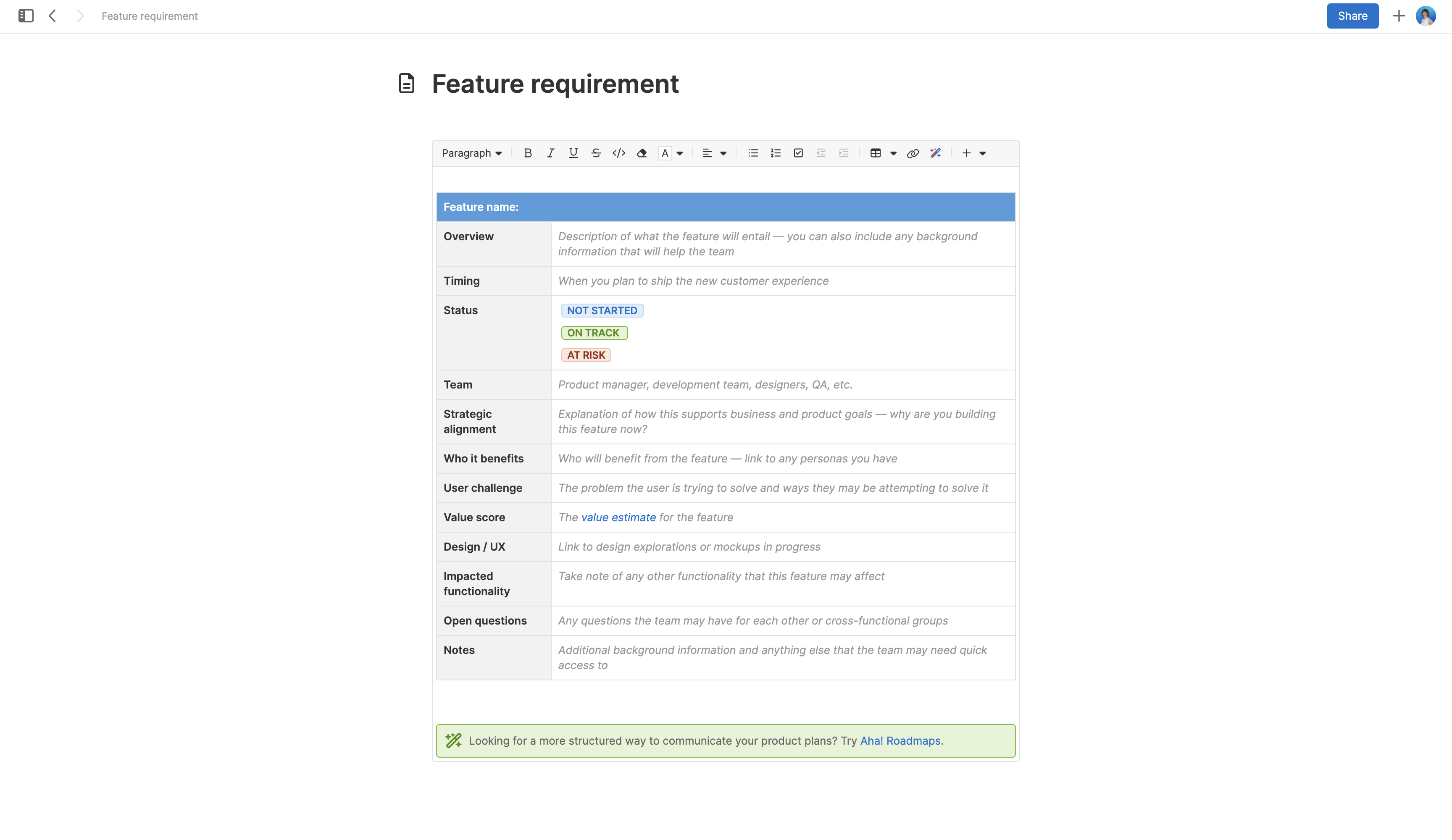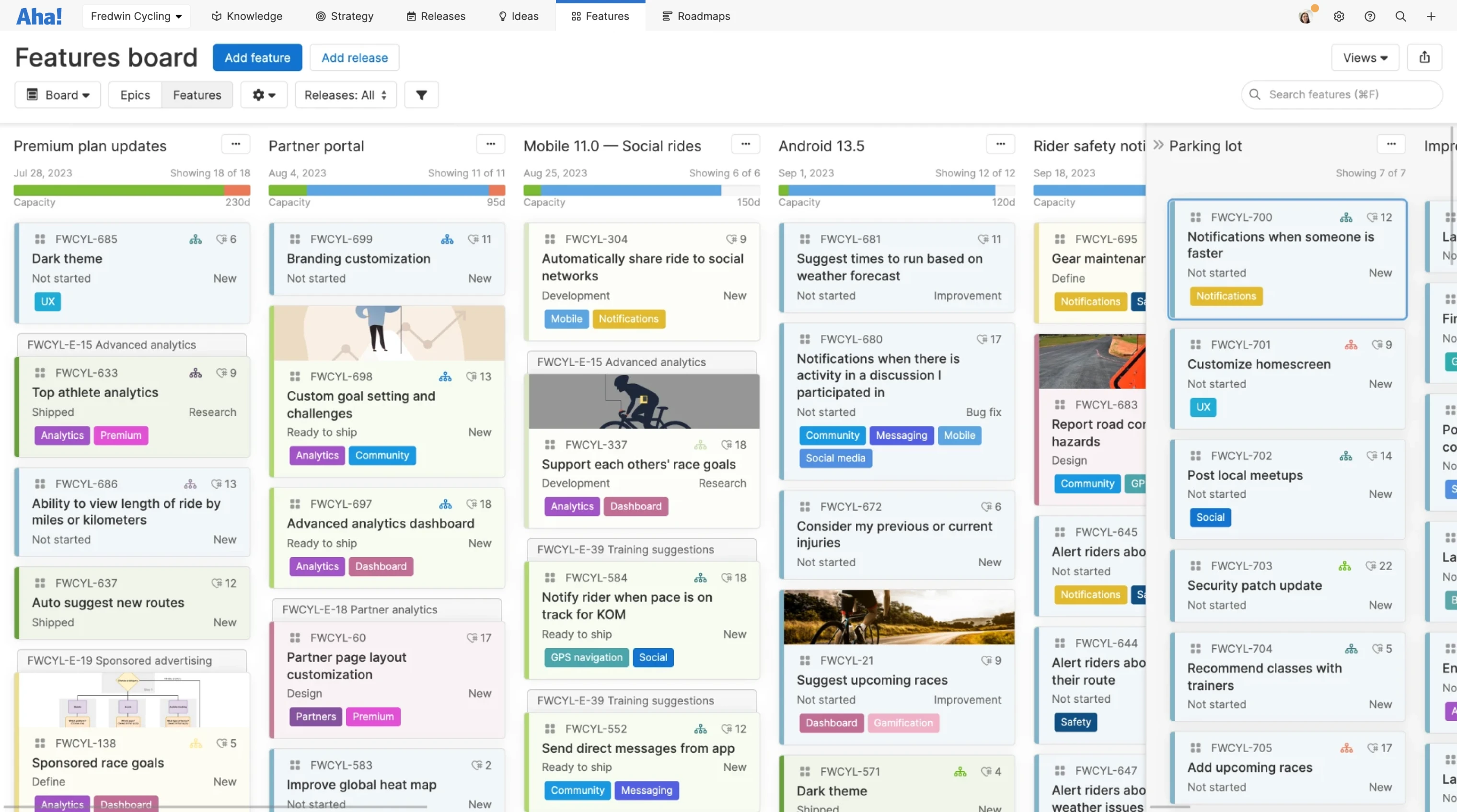Tradeoff decisions must be made. While a feature idea might excite customers, you may find it will take more effort to build than you deem it is worth. And other popular ideas may fail to make the cut if they do not support company or product goals.
These nuances are what make defining product features and prioritization such a crucial piece of a product manager's job. It takes an ongoing commitment to the product vision, customer research, and cross-functional collaboration to cut through the noise and find what matters — identifying features that people will use and love.
Let's walk through how to define product features in detail — including a template and examples. Use the following links to jump ahead to a specific section:
Who defines product features? -> Learn who is responsible for defining and prioritizing product features — and how product managers ensure each one aligns with company strategy and customer needs.
Product features vs. other terms -> Understand how features differ from related terms (like products, benefits, epics, user stories, and requirements) — with clear definitions and examples to help you use each correctly.
How to define product features -> Discover how to turn ideas into well-defined features that clearly articulate functionality, purpose, and customer value. Includes guiding questions and a video walkthrough from a product expert.
Product feature components -> Explore the key elements that every feature definition should include — from strategic alignment and user challenge to value score and design links — for consistency across your team.
Product feature template -> Access a ready-to-use product feature template that helps you capture essential details, save time, and maintain clarity from ideation to delivery.
Product features example -> See a real-world example of a well-documented product feature in Aha! Roadmaps, along with visuals that show how features are tracked and organized across releases.
How to prioritize features for your product roadmap Learn proven methods for prioritizing product features based on strategic impact, customer value, and development effort. Includes frameworks and tools to guide decision-making.
Who defines product features?
Defining and prioritizing product features is a key aspect of your role as a product manager. You are responsible for ensuring that any new or updated product feature aligns with the business and product strategy.
To do this, most product teams follow a consistent, repeatable method for writing product features. That way you can reliably communicate new functionality to stakeholders and tie everything back to your goals — avoiding a hodgepodge of enhancements that customers do not need or want.
Related:
Top
What is the difference between a product feature and other terms?
Product development terms could fill a dictionary (which is why we wrote one). When learning the lingo, some folks might get confused about what differentiates a feature from a product, benefit, or other increments of work. Before we go any further, let's clear a few things up.
Product vs. feature
A product is an offering you sell to customers to satisfy a need or want. Products often encompass more than the item or service itself — including elements like sales, support, integrations, and other touchpoints that people interact with (at Aha! we call this the Complete Product Experience).
A feature is a discrete area of functionality within the product. While important, it is only one small piece of what customers are actually buying.
Product feature vs. benefit
A product feature is a specific piece of functionality that provides a corresponding benefit or set of benefits for the customer.
A benefit is the positive outcome or advantage gained from using that functionality. In other words, benefits describe why a feature ultimately matters to the customer.
Below are a few examples of the difference between product features and benefits:
Product/Service | Feature | Benefit |
Automobile | Reverse automatic braking | Enhanced safety |
Financial reporting software | Custom analytics report | Flexibility, configurability |
Online training portal | Search and filter options | Time-savings, interactivity |
Product features vs. epics, user stories, and requirements
Along with features, product teams leverage epics, user stories, and requirements to describe what you will build. The table below details the most common usage for these terms. Depending on the development methodology your team uses, the terms may have slightly different meanings.
Epic | A group of related features or user stories that share common business objectives. Epics are larger bundles of work that tend to span multiple releases. |
Feature | A slice of functionality that describes a product's appearance, components, and/or capabilities. |
User story | A product feature that is described from the perspective of the end-user. The user story format is helpful in relating features to benefits. As a [type of user], I want to [action] so that [benefit]. |
Requirement | A defined capability that needs to be completed in order to deliver a feature. A single feature may have multiple requirements. |
Related:
Top
How to define product features
Before you write a feature, you need an idea. Ideas for new product features can come from anywhere — you, your team, customers, and other stakeholders. But not all ideas become features.
As a product manager, it is your job to gather, assess, and prioritize ideas to identify which ones are feature-worthy. For most teams, it is impractical (impossible, even) to build every suggestion that comes your way — you have to determine which ones will have the greatest impact. This process is called idea management and it is the precursor to the feature definition process.
With your best ideas identified, you can start writing features. Defining a product feature means clearly communicating what you want to build and why. A well-defined feature should describe both the functionality as well has how it addresses a customer need. These details align the broader product team on the problems to solve and how to approach them.
For example, a detailed feature provides engineers with the context to help them decide the best way to implement the new functionality. For product marketing, it helps highlight which benefits to showcase in the go-to-market strategy.
When you start defining a product feature, consider these questions to help clarify the details:
How will this feature contribute to our goals and initiatives?
What challenge will this feature solve for?
What capabilities or user experiences need to be designed and built to deliver this feature?
What is the timeline for delivering this feature?
Which customer segments or personas will be served by this feature?
Who is responsible for delivering this feature?
Related:






